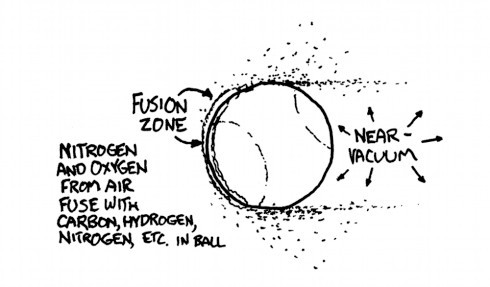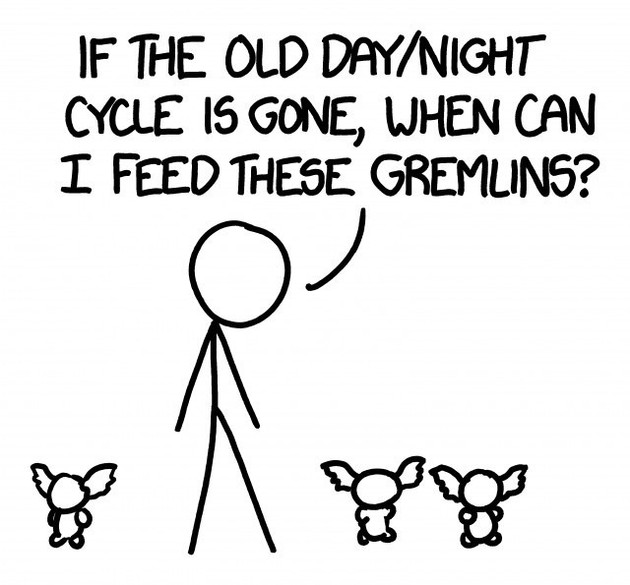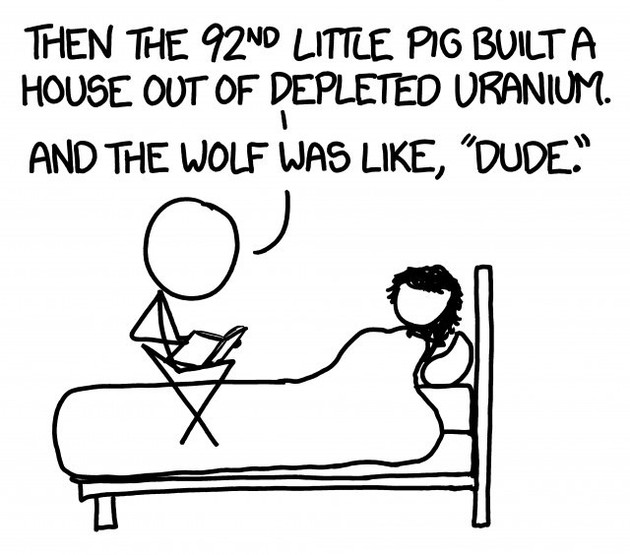What If: Serious Scientific Answers to Absurd Hypothetical Questions. Randall Munroe author and illustrator. (9 out of 10 stars) 2014, hardcover, Houghton Mifflin Harcourt
I knew Randall Munroe from his xkcd.com webcomic. Told with simple lines and stick figures, he’s able to get to truths about life more directly than many other cartoonists, and with a wicked sense of humor that makes my boss realize I’m not “working” as hard as I could be in my cubicle.
I’ve seen his book “What If”come up on several end-of-year lists for the geekishly inclined, and figured I’d give it a shot. I’m glad I did. Subtitled “Serious Scientific Answers to Absurd Hypothetical Questions,” it takes some of the most interesting questions and his answers from the xkcd What If? blog, adds other new ones, and makes a surprisingly readable book. He worked at NASA until 2005 when he started his cartooning gig, and his scientific background makes for some fascinating answers to ridiculous questions.

What kind of ridiculous questions does he answer?
“If every person on Earth aimed a laser pointer at the Moon at the same time, would it change color?”
“If every human somehow simply disappeared from off the face of the Earth, how long would it be before the last artificial light source would go out?”
“What would happen if you tried to fly a normal Earth airplane above different solar system bodies?”
…there are also several that are specifically geek genre-related, like “How much Force power can Yoda output?” and he works in other pop culture references to help those of us who are non-physics majors find the relevance to our real lives.

…most of these questions don’t have a simple answer. Munroe gets into the physics behind answering the questions, but then goes beyond the original question. Sometimes this is because the questioner didn’t quite ask the right question to get to a more exciting conclusion…often it’s Munroe pushing things to their most ridiculous extreme. So the question:
“What would happen if you made a periodic table out of cube-shaped bricks, where each brick was made of the corresponding element?”
becomes more complicated, more dangerous, and more explosive than I had expected. He gives a short answer:
- You could stack the top two rows without much trouble
- The third row would burn you with fire
- The fourth row would kill you with toxic smoke
- The fifth row would do all that stuff PLUS give you a mild dose of radiation
- The sixth row would explode violently, destroying the building in a cloud of radioactive, poisonous fire and dust.
- Do not build the seventh row.
…but then he also goes into delightfully horrific detail, explaining exactly how the chemicals would interact and destroy each other and you and eventually your entire city. And then he throws in adorably simple stick figure-drawings of someone being destroyed by the periodic table—it doesn’t get better. Except it does. Because the footnotes, along with some sourcing, are asides that make you feel like you’ve got the greatest, most effed up physics professor cracking jokes in class.

Another favorite question:
“What would happen if everyone on Earth stood as close to each other as they could and jumped, everyone landing on the ground at the same instant?”
After explaining that it gets asked a lot, and other people have answered it, he looks a little more closely. What it would mean to have all of the people in the world in one spot (it would be about the size of Rhode Island), how they would get there, how and how long it would take to disperse afterward, the cell phone networks collapsing, the language barriers….and that’s before the deaths start.
Munroe is a master at explaining, and mocking, and getting to the bottom of these questions that as adults we’ve grown too jaded to ask. Just yesterday, my sons were asking if you could really rig machine guns to make a jetpack. Thanks to “What If?” I had an answer for them. A long, rambling one that hopefully took the idea out of their head so they don’t go try it in my backyard.
If you’re looking for a gift for yourself or the really extraordinarily nerdy scientist in your life, this one’s a great read.